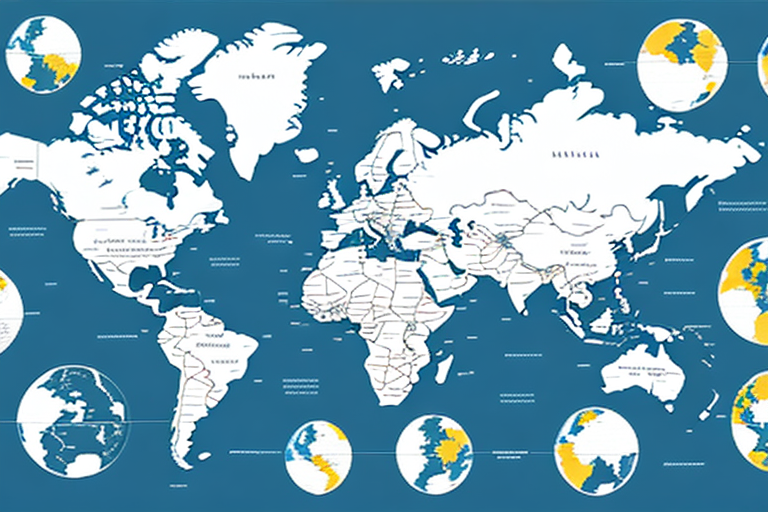Introduction to UPS and DHL
In the realm of international shipping, UPS (United Parcel Service) and DHL (Dalsey, Hillblom, and Lynn) stand out as two of the world's leading logistics providers. Both companies offer comprehensive shipping solutions, extensive global networks, and advanced tracking systems. This article delves into a detailed comparison of UPS and DHL, examining their differences, similarities, pricing structures, shipping times, customs processes, tracking capabilities, insurance options, customer support, and more to help businesses make informed decisions.
Service Offerings and Capabilities
Logistics and Shipping Solutions
UPS, established in 1907, has grown into a multinational corporation offering a wide array of logistics solutions, including shipping, courier services, and supply chain management. With a presence in over 220 countries and territories, UPS ensures comprehensive coverage for global shipments.
DHL, founded in 1969 and owned by Deutsche Post, specializes in international shipping, logistics, and e-commerce solutions. DHL operates in more than 220 countries, with a particularly strong presence in emerging markets across Africa and the Asia Pacific.
Technology and Innovation
Both UPS and DHL invest heavily in technology to enhance their services. UPS has been at the forefront of adopting emerging technologies such as drones and autonomous vehicles, aiming to revolutionize delivery methods. For instance, UPS has partnered with autonomous vehicle companies to explore self-driving delivery trucks.
DHL focuses on enhancing its e-commerce capabilities, emphasizing cross-border trade and leveraging advanced logistics software to streamline international shipping processes.
Pricing and Shipping Times
Comparative Pricing
When it comes to international shipping costs, DHL often proves to be the more cost-effective option compared to UPS. However, pricing can vary based on factors such as package weight, size, and destination. Both companies offer a range of services that cater to different budgetary needs, making it crucial for businesses to evaluate their specific shipping requirements.
Delivery Speed
UPS typically offers faster delivery options, which can be beneficial for time-sensitive shipments. Their services range from Same Day Delivery to 3-5 Day Ground Shipping. In contrast, DHL provides various delivery speeds, including Express and Time Definite options, which cater to different urgency levels.
For businesses prioritizing speed, UPS might be the preferable choice, whereas DHL offers competitive speeds for cost-conscious shipments.
Global Reach and Customs Clearance
International Coverage
Both UPS and DHL boast extensive global networks, ensuring shipments reach over 220 countries. However, DHL has a more robust presence in certain regions, particularly in Africa and the Asia Pacific, while UPS has a stronger foothold in the Middle East and Latin America.
Customs Clearance Processes
International shipping often involves navigating complex customs regulations. DHL has established long-standing relationships with customs authorities worldwide, facilitating smoother and quicker clearance processes. Conversely, UPS offers comprehensive customs brokerage services, but the efficiency can vary based on the destination country.
Tracking, Insurance, and Customer Support
Tracking Capabilities
Visibility is paramount in international shipping. Both UPS and DHL provide robust tracking systems that offer real-time updates. UPS utilizes its UPS Tracking service, accessible via email, SMS, or mobile app, while DHL offers similar real-time tracking through its DHL Tracking platform.
Insurance Options
Protecting valuable shipments is essential. UPS offers insurance coverage up to $100,000 per package, catering to high-value goods. Similarly, DHL provides insurance for shipments up to $100,000, ensuring comprehensive protection against loss or damage.
Customer Support Services
Effective customer support can greatly influence the shipping experience. UPS provides extensive customer service through phone, email, and live chat, supported by a global network of service centers. DHL also offers multiple support channels, including phone, email, and live chat, with knowledgeable personnel adept at resolving shipping-related inquiries.
Sustainability Initiatives
Environmental Goals
Both UPS and DHL are committed to reducing their carbon footprints. UPS aims to achieve carbon neutrality by 2050, investing in alternative fuel vehicles, electric delivery trucks, and renewable energy sources. On the other hand, DHL has set a target to reduce carbon emissions by 50% by 2025 through enhancing transportation network efficiencies and investing in renewable energy.
Sustainable Shipping Options
Businesses increasingly prioritize sustainability in their operations. UPS offers programs like "UPS My Choice," which allows customers to select delivery options that minimize environmental impact. DHL's "GoGreen" program enables customers to offset the carbon emissions associated with their shipments, promoting more sustainable shipping practices.
Choosing the Right Carrier for Your Business
Factors to Consider
- Cost: Assess shipping rates based on package dimensions, weight, and destination.
- Delivery Speed: Determine the urgency of your shipments and choose a carrier that meets your timelines.
- Global Reach: Ensure the carrier has strong coverage in your target markets.
- Customs Expertise: Opt for a carrier with efficient customs clearance processes.
- Tracking and Visibility: Select a service that provides comprehensive tracking features.
- Customer Support: Reliable and accessible support can resolve issues promptly.
- Sustainability: Consider the carrier's environmental initiatives if sustainability is a priority.
Case Studies
Consider a U.S.-based electronics company that utilizes both UPS and DHL for international shipments. The company found DHL to be more cost-effective and efficient for shipping to Europe and Asia, leveraging DHL's strong presence in these regions. Conversely, for shipments to African markets, UPS provided more reliable and timely delivery options due to its extensive network in those areas.
Conclusion: Which Carrier Suits Your International Shipping Needs?
Both UPS and DHL offer robust and customizable international shipping services tailored to various business needs. When choosing between the two, consider factors such as cost, delivery speed, global reach, customs efficiency, tracking capabilities, customer support, and sustainability initiatives. By evaluating your specific shipping requirements and budget, you can select the carrier that best aligns with your business objectives and ensures seamless international operations.






















